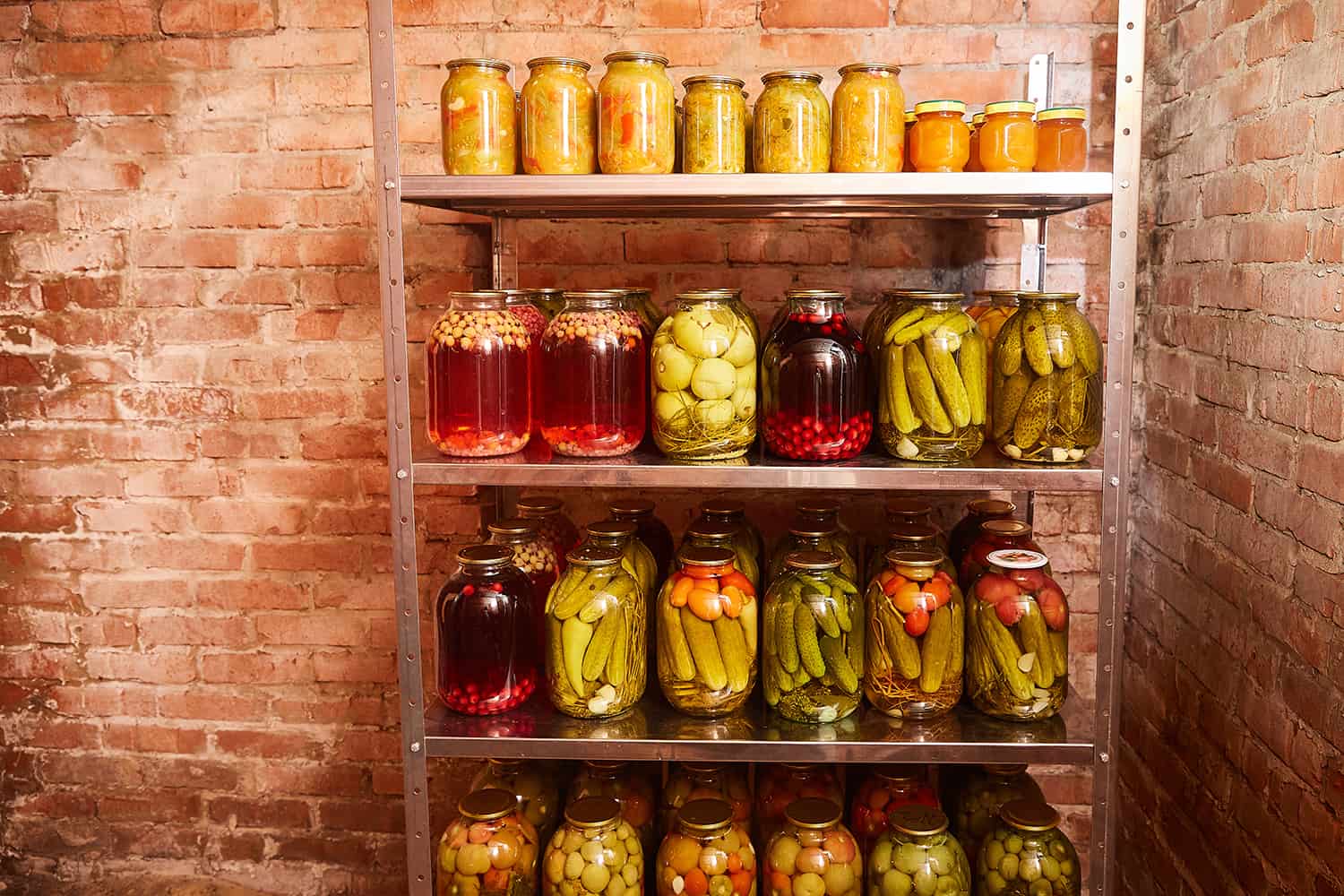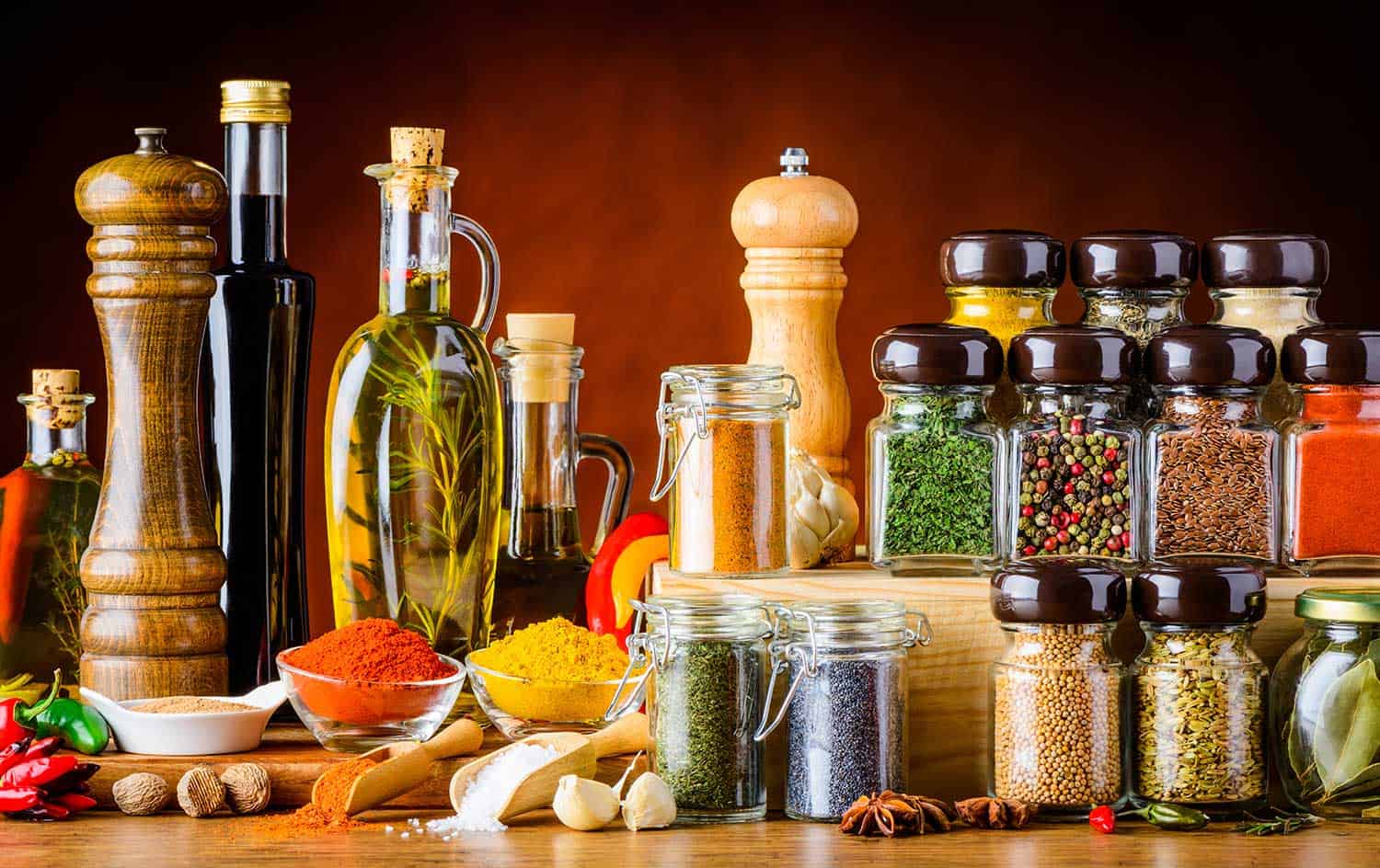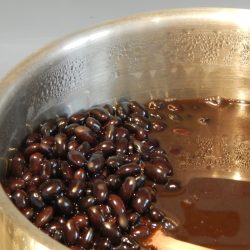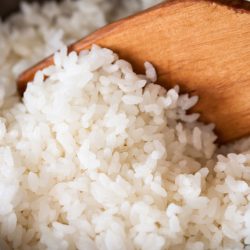What do you need in your pantry if you want to stock it for an entire year? There are obvious things that come to mind, like beans and rice and canned meats. But preparing for an entire year is different than having enough food for a few weeks. We've done our research to see what the best practices are for long term pantry stocking. Here's what we found out.
To stock your pantry for a year complete the following steps:
- Prepare Your Pantry
- Determine the amounts of food that you need
- Get the right food, including:
- Dried Pasta and Grains
- Rice
- Dried Beans
- Canned Vegetables And Fruits, Home-canned if possible
- Canned Meats
- Oils, Condiments, Spices
- Dry Baking Supplies
- Nut Butters & Nuts
- Chocolate, Coffee, Tea
Let's take a look at how to figure out what you need for a year, and which of these items you may want. Plus, we'll answer a few other questions about how to ensure you have food for the long run.
![Woman writing a grocery list in front of an open pantry, How to Stock a Pantry For a Year [Steps and food lists]](https://kitchenseer.com/wp-content/uploads/2020/08/How-to-Stock-a-Pantry-For-a-Year.jpg)
How To Stock Your Pantry For An Entire Year
People have various reasons for doing a yearly pantry fill. For some, it's part of religious practice. Others want to do as little weekly shopping as possible. Some people might be preparing for emergencies, and others may find this to be a great budget tactic. But it can be hard to think about that large of a buy and that much preparation. How do you do it?
Prepare Your Pantry
Part of keeping a well-stocked pantry is to keep that stock rotated. Wherever you keep your pantry stores, whether in a large pantry near your kitchen or split up to fill various closets or basement space, you want to use up the oldest food first. It's a good idea to mark your items with the date of purchase and create an easily rotatable organizational system.
Food Storage stickers like these work well in the pantry or the freezer for organization. Click here for these on Amazon.
Determine Your Amounts
When doing a yearly stock of your pantry, it's good to know what your family eats. Take a typical month and figure out how many boxes of pasta you eat, jars of sauce, cans of peas. Then multiply that times four to make your shopping list. Some things you'll need a lot of. Other things, you'll need less. Keeping staples and the basics, cooking oils and spices, allows you to cook and be creative.
Get The Right Foods
We've listed above great foods to keep in your pantry, but let's dig a bit deeper.
Dried Pasta, Grains, And Rice

Carbohydrates make great fast fuel for the body. Items like pasta, rice, pasta, rice, and oatmeal give you the base from which to plan a meal. If you want more variety, consider adding quinoa, farro, popcorn, maybe even rice cakes (they're great with a slather of peanut butter).
Dried Beans And Canned Beans
Beans and peas are a super source of easily storable protein. Use black beans in dessert recipes like brownies and chocolate cakes. With chickpeas, garlic, and olive oil, you can whip up a batch of hummus for a satisfying after school snack. Dried beans will store for very long periods, which makes them a super addition to your long-term pantry.
Canned Vegetables And Fruits

If you have your vegetable garden or fruit tree and have the time to can your produce, it's a great way to get vitamin dense nutrients at a fraction of the cost. You probably will avoid some sugars in the fruit by going with your own, as well. But whether home-canned or storebought, you'll want vegetables and fruit in your pantry.
Canned Meat
Canned tuna, canned chicken, even potted meat like SPAM and deviled ham can come in handy for your yearly pantry. Depending on the stock level of your fresh frozen meat, a lower number of these items might be needed. However, a quick tuna salad is always good in a pinch, so it's good to keep some in the pantry.
Oils, Condiments, And Spices

These are the building blocks for so many recipes. That's why you want to be sure to stock plenty of olive oil, vegetable oil, and any other oils you prefer in cooking. The same goes for vinegar, mustard, mayo, ketchup, pickles, relishes, and jarred sauces. As for spices, they don't take up much space. Be sure to go for our standard salt and pepper and any other herbs you use a lot of. Cinnamon, nutmeg, and allspice are great to have for breakfast oatmeal and cookie recipes.
Dry Baking Supplies
Baking is a great way to have bread without shopping for it every week. Stock your pantry with the flours of your choice, sugar, baking powder, baking soda, yeast, and cocoa powder. Consider keeping dried fruits and chocolate chips on hand for cookies, sweet loaves of bread, and cakes.
Nuts And Nut Butter
Nuts are another long-lasting and protein-rich pantry staple. They work in both sweet and savory recipes and to sprinkle on fresh garden salads. And don't forget the nut butter like peanut butter and almond butter. They're useful as breakfast toppings, spread for sandwiches, and in recipes for peanut sauces and other similar ideas.
Chocolate, Coffee, And Tea
All three of these items go a long way toward making a day feel complete. So don't leave them out of your yearly pantry if you're a fan.
What Is The Best Survival Food With A Long Shelf Life?
Survival food is food for an emergency. A pantry prepared for any disaster, natural or man-made, should contain survival food. So what food safely passes the test of time?
- Dried Beans will last indefinitely
- Meat jerky will last 1-2 years
- Canned tuna lasts 2-5 yrs beyond "best by" date
- Sealed instant coffee will last 2-20 years beyond the "best by" date.
- Oatmeal, instant, and steel-cut will last 1-2 years beyond the "best by" date.
- Dried pasta will last 1-2 years beyond the "best by" date.
- Quinoa will last 2-3 years beyond the "best by" date.
- Spam, when unopened, will last 2-5 years beyond "best by" date
- Soy Sauce will last 2- 3 yrs when refrigerated.
- Sugar and Syrup will last indefinitely if stored properly.
- White rice will last 4-5 years beyond the "best by" date.
What Is The Best Emergency Food?
It's great to think in hypotheticals, but what if there was an actual emergency. Which foods would guarantee your family could eat during an emergency? Are there rules of thumb?
It's recommended that you keep three days of non-perishables on hand for disasters. You'll want to avoid foods that make you thirsty, like those that contain a lot of sodium, and keep family members' dietary needs in mind. A quick and easy list to keep on hand is the following:
- Ready-to-eat canned meats, fruits, vegetables, and a manual can opener
- Protein or fruit bars
- Dry cereal or granola
- Peanut butter or Almond butter
- Dried fruit and nuts
- Canned juices and bottled water
- Non-perishable pasteurized milk
- High-energy foods
- Food for infants if needed (or to give away)
You can also buy emergency kits to keep nearby, just in case. These supply one person with 30 days worth of nutrients.
This emergency kit comes in a watertight pail to keep your food safe from the elements and potential pests. It has a shelf life of up to 25 years. Click here to see this on Amazon.
Bars like this are great to keep in a vehicle or RV or your backpack if camping. Calorie-laden and enough to keep you fueled and going should you encounter a problem. Click for this on Amazon.
When it's time to go shopping, you may want to bring a friend to help you keep track of your list, and maybe push a second cart. Mealtime will be smooth without having to run to the grocery store every single day.
If you enjoyed this post here at KitchenSeer.com, please check out a few of our others below:
Does Rice Go Bad In The Pantry? [Inc. Tips for Keeping Rice Extra Fresh]
Does a Pantry Need Ventilation? [3 Times When the Answer is yes]





![Pour water into rice - How Much Water To Rice In Rice Cooker [Ratio By Type Of Rice]](https://kitchenseer.com/wp-content/uploads/2022/03/Pour-water-into-rice-250x250.jpg)



![A rice cooker filled with freshly cooked rice, Can Rice Cookers Cook Brown Rice? [And How to]](https://kitchenseer.com/wp-content/uploads/2022/02/A-rice-cooker-filled-with-freshly-cooked-rice-250x250.jpg)